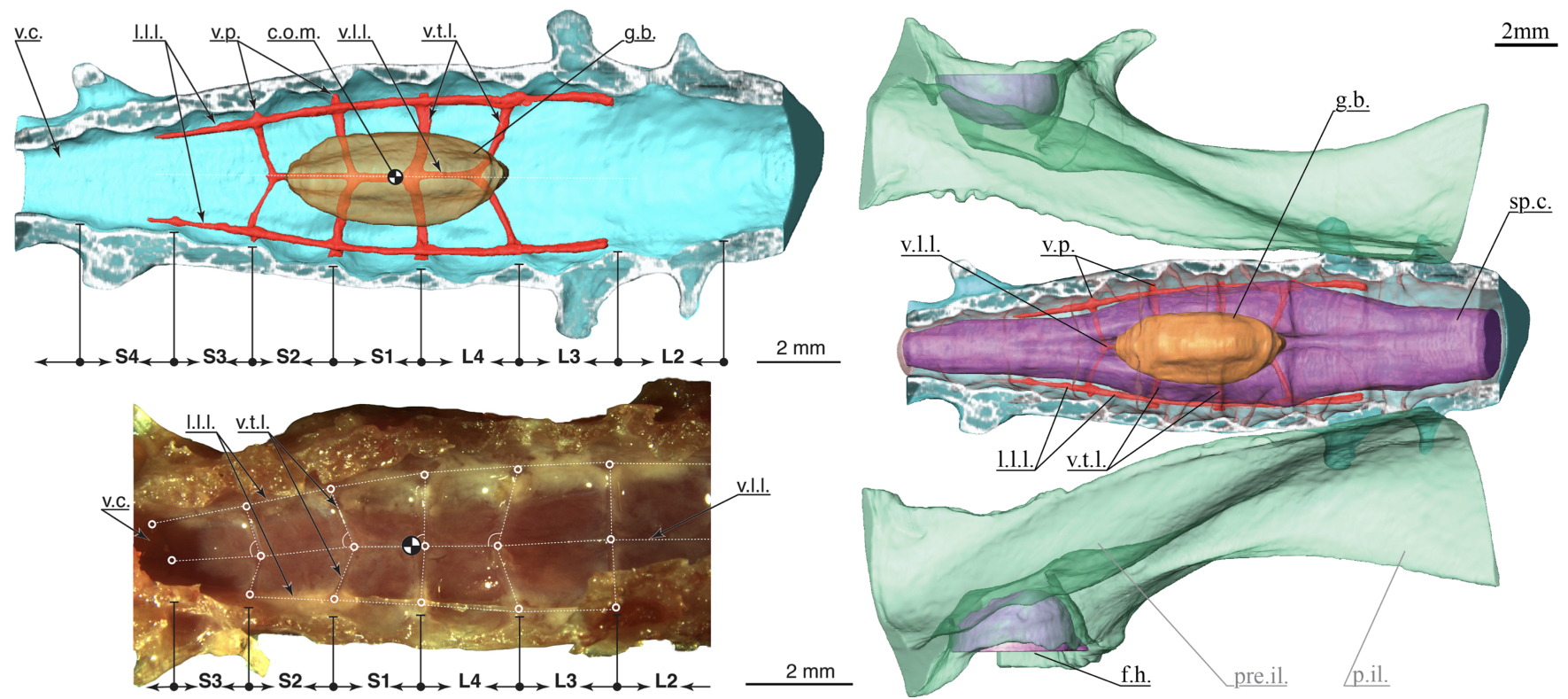
Tissues of the lumbosacral region in birds, digitally and classically dissected, here shown for a quail. The glycogen body (g.b.) with a slightly higher-than water density is supported by a ligament network (v.l.l, v.t.l, v.p., l.l.l). The entire lumbosacral organ (LSO) soft-tissue structure is submerged in spinal cord fluid. Not shown here: accessory lobes with potential mechanosensing function, protruding pair-wise from the spinal cord into the spinal canal.
Birds are diverse and agile vertebrates; they fly and glide through the air, run on the ground, swim and dive in the water, and perch and jump through trees. Birds also show an unusual and unique morphology; an enlargement of the spinal canal in the lumbosacral region. The soft tissue structure involved potentially presents a sensing organ; the 'lumbosracal organ' (LSO) [Necker 2002]. Our definition of the LSO includes the spinal cord, a glycogen body positioned in the dorsal bifurcation of the spinal cord, pairs of accessory lobes, a network of denticulate ligaments that support the spinal cord and the glycogen body, and a series of semi-circular canals formed by fused lumbosacral vertebrae.
The unusual feature clustering suggests that the LSO might be involved in bird's hindlimb neurocontrol of locomotion, likely in addition to the vestibular system. As an intraspinal mechanosensor, the LSO would propagate feedback almost instantaneously to relevant motor control centers in the spinal cord hemispheres nearby.
The precise LSO mechanosensing mechanism is still unknown. We mapped the anatomy with an approach combining traditional gross dissection and 3D imaging (micro-CT and MRI). We recorded three-dimensional data supporting the hypothesis that the glycogen body and the spinal cord could oscillate vertically within the spinal canal. The glycogen content seems to increase the glycogen body's density, potentially adjusting LSO sensitivity.
We suggest the LSO is reminiscent of a mass-spring accelerometer damped by spinal cord fluid. Previous work pointed out the proximity of accessory lobes to neurocontrol units in the spinal cord relevant for locomotion control (i.e., [Eide 1996]). We are now developing models to investigate the LSO soft material response to locomotion.
